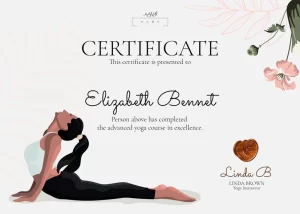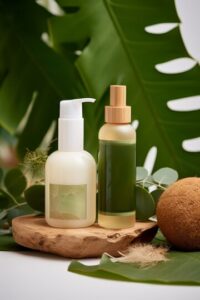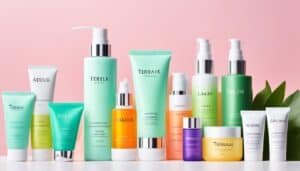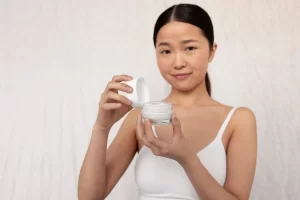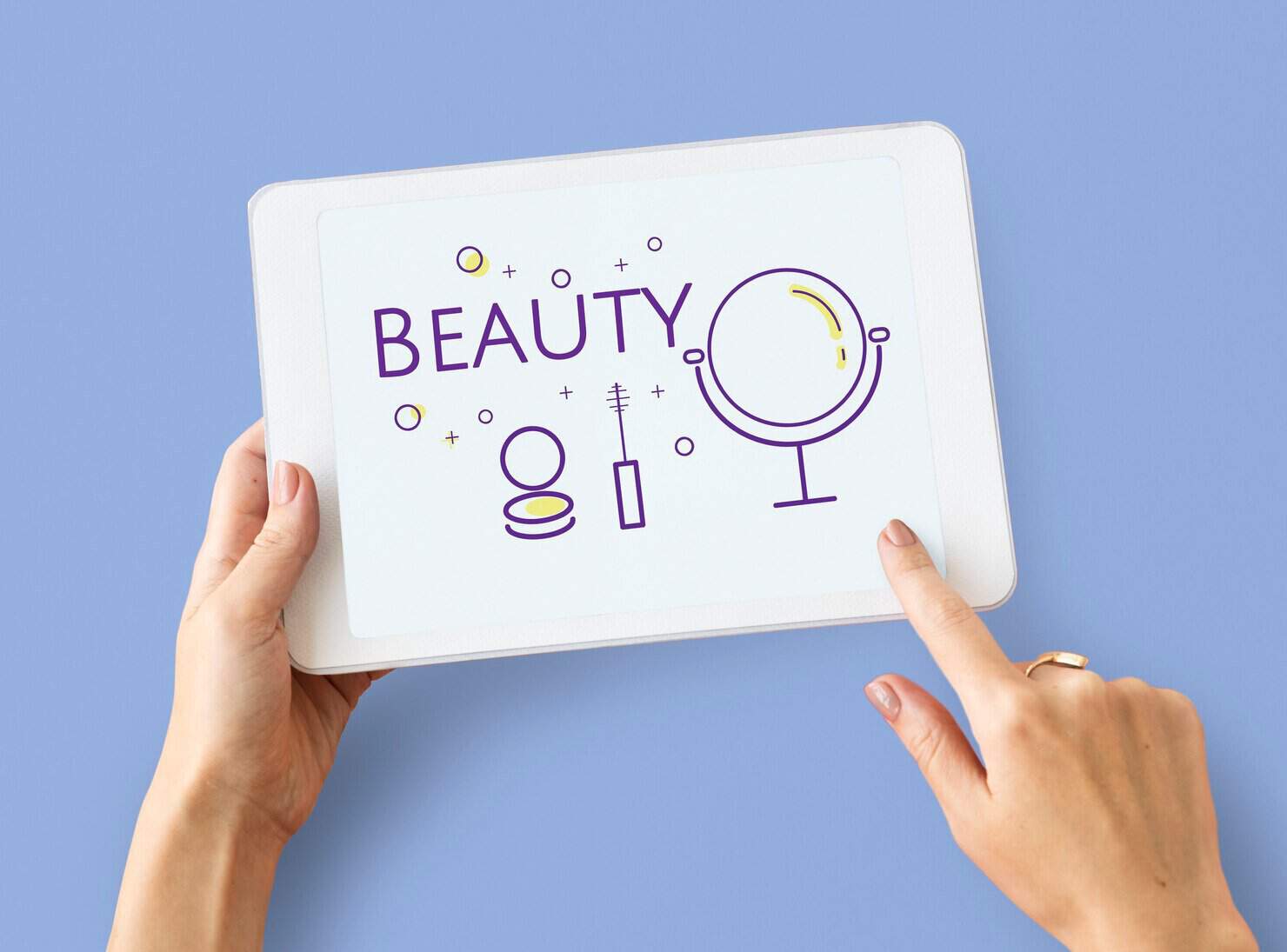
Confronting Unrealistic Beauty Standards Today
Did you know that 70% of women and 45% of men feel pressure to have a perfect body?
The impact of unrealistic beauty standards on self-image and mental health cannot be overstated. Society’s expectations and the constant bombardment of idealized images can leave individuals feeling inadequate and dissatisfied with their appearance.
In this article, we will explore how social media and traditional media perpetuate unrealistic beauty standards. We will also discuss the detrimental effects of these standards on mental health and provide strategies for challenging and overcoming them. Let’s dive in!
Key Takeaways:
- Unrealistic beauty standards affect both men and women, with a significant number of individuals feeling pressure to conform.
- Social media and traditional media play a crucial role in shaping and perpetuating unrealistic beauty standards.
- The impact of these standards on mental health can lead to low self-esteem, body dissatisfaction, and other mental health issues.
- Challenging unrealistic beauty standards requires promoting self-acceptance, embracing diversity, and empowering individuals to define beauty on their own terms.
- The origin and development of unrealistic beauty standards are influenced by historical perspectives, cultural norms, and societal expectations.
The Influence of Social Media on Unrealistic Beauty Standards.
Social media platforms have undeniably become influential forces in shaping society’s perception of beauty. With the rise of filters, editing apps, and carefully curated profiles, social media promotes unrealistic beauty standards that can have a profound impact on individuals’ self-image and mental well-being.
On platforms like Instagram and TikTok, users are bombarded with images of seemingly flawless bodies, flawless skin, and unrealistic beauty ideals. These images, often heavily edited and filtered, can create a distorted perception of what is considered beautiful and attainable.
Social media sets unrealistic beauty standards by showcasing bodies and features that are often unattainable without the use of Photoshop or other digital enhancements. This constant exposure to perfected and altered images can lead individuals to compare themselves unfavorably, fostering feelings of insecurity, inadequacy, and low self-esteem.
Furthermore, social media platforms create an environment where appearance is highly valued, reinforcing the belief that one’s worth is contingent upon meeting these unrealistic standards. This can lead to a pervasive sense of dissatisfaction with one’s own appearance and an unending pursuit of unattainable perfection.
The Impact of Likes, Comments, and Followers
In the world of social media, the number of likes, comments, and followers a person receives can significantly impact their self-worth and validation. This can foster a toxic culture of comparison, where individuals feel pressured to conform to societal beauty standards in order to gain acceptance and recognition.
“Social media platforms have created an environment where external validation and approval hold immense power. This can have a detrimental effect on individuals’ mental health and well-being, perpetuating an unattainable quest for perfection.”
The Illusion of Perfection
Social media platforms often present a curated and carefully constructed view of people’s lives, where only the highlights and best moments are showcased. This can create an illusion of perfection and contribute to feelings of inadequacy among users who compare their everyday lives to these idealized representations.
It is crucial to remember that behind every seemingly perfect image lies the reality of filters, editing, and carefully selected content that doesn’t always reflect the truth. This disparity between reality and the curated online persona can lead to an unhealthy obsession with appearance and a constant need for validation.
Challenging Unrealistic Beauty Standards
While social media plays a significant role in promoting unrealistic beauty standards, it also provides a platform for individuals to challenge and redefine these standards. Influencers and activists are using their online presence to promote body positivity, self-acceptance, and inclusivity. By sharing authentic and unfiltered content, they encourage others to embrace their own unique beauty and break free from societal expectations.
It is essential for individuals to cultivate a healthy relationship with social media by curating their feed to include diverse and body-positive content. Engaging with accounts that promote realistic beauty standards and self-acceptance can help counteract the negative impact of unrealistic portrayals of beauty.
In conclusion, social media’s influence on unrealistic beauty standards is undeniable. By promoting and perpetuating unattainable ideals, these platforms can significantly impact individuals’ self-image and mental well-being. It is important for users to be aware of the potentially harmful effects of these standards and actively challenge them by promoting self-acceptance and diversity.
Media’s Role in Perpetuating Unrealistic Beauty Standards.
The media plays a significant role in perpetuating unrealistic beauty standards that can have a profound impact on individuals’ self-image and well-being. Through various mediums such as television, magazines, and advertising, the media portrays an idealized and often unattainable standard of beauty, contributing to the societal expectations surrounding appearance.
The portrayal of unrealistic body standards in media can lead to feelings of inadequacy and low self-esteem, as individuals compare themselves to these unattainable ideals. The constant exposure to these images can create an unhealthy obsession with achieving a specific body type and can contribute to a range of mental health issues, including eating disorders and body dysmorphia.
“The media’s portrayal of beauty perpetuates an unrealistic standard that can negatively impact individuals’ self-perception and mental well-being.” – Dr. Elizabeth Johnson, Psychologist
Advertisements often rely on heavily photoshopped images, enhancing and altering models’ appearances to fit a narrow definition of beauty. These images create an illusion of flawlessness that is unattainable in reality. Individuals aspire to these edited versions of beauty, unaware of the extent of digital manipulation involved.
Moreover, the lack of diversity in mainstream media further perpetuates unrealistic beauty standards. People of different races, body types, and abilities are often underrepresented or misrepresented, reinforcing the notion that only a specific look is desirable and acceptable.
It is essential to recognize the media’s influence on shaping societal beauty standards and the negative impact it can have on individuals’ mental health. By challenging and questioning these unrealistic norms, we can work towards creating a more inclusive and realistic representation of beauty.
| Impact of Media’s Unrealistic Beauty Standards | |
|---|---|
| Low self-esteem | Constant exposure to unattainable beauty ideals can lead to feelings of inadequacy and low self-esteem. |
| Body dissatisfaction | The media’s portrayal of an idealized body type can contribute to body dissatisfaction and a negative body image. |
| Mental health issues | Unrealistic beauty standards in media can contribute to the development of eating disorders, body dysmorphia, and other mental health issues. |
| Limited representation | Mainstream media often lack diversity, leading to the underrepresentation and misrepresentation of marginalized groups. |
It is crucial to cultivate a critical mindset and challenge the unrealistic beauty standards perpetuated by the media. By embracing diversity, promoting body positivity, and advocating for inclusive representation, we can foster a healthier and more accepting society.
The Detrimental Effects of Unrealistic Beauty Standards on Mental Health.
Unrealistic beauty standards have a profound impact on mental health, leading to a range of negative effects. The societal expectations surrounding beauty can significantly contribute to low self-esteem, body dissatisfaction, and various mental health issues.
Low self-esteem: When individuals strive to meet unrealistic beauty standards, they often compare themselves to the idealized images portrayed in the media or on social platforms. This constant comparison can erode self-confidence and contribute to feelings of inadequacy.
Body dissatisfaction: Unrealistic beauty standards often center on a specific body type or appearance that is portrayed as desirable. This can instill a sense of dissatisfaction with one’s own body, leading to body image concerns and a negative relationship with one’s physical self.
Mental health issues: The pursuit of unattainable beauty standards can have a significant impact on mental well-being. It can contribute to anxiety, depression, eating disorders, and other mental health conditions, as individuals may engage in damaging behaviors in an effort to conform to these standards.
“Society’s unrealistic beauty standards place an immense burden on individuals, affecting their mental health and overall well-being.” – Dr. Elizabeth Parks, Psychologist
It is crucial to address the detrimental effects of unrealistic beauty standards on mental health. By challenging these standards and promoting acceptance of diverse body types and appearances, we can foster a healthier and more inclusive society.
| Impact of Unrealistic Beauty Standards on Mental Health | Examples |
|---|---|
| Low self-esteem | – Constant self-comparison – Feelings of inadequacy |
| Body dissatisfaction | – Negative body image – Discontent with physical appearance |
| Mental health issues | – Anxiety and depression – Eating disorders |
Challenging Unrealistic Beauty Standards: Empowerment and Self-Acceptance.
Overcoming unrealistic beauty standards can be a challenging journey, but it is possible with the right strategies and mindset. By embracing self-acceptance and breaking free from societal norms, individuals can redefine beauty on their terms and foster a more inclusive and empowering environment. Here are some tips and techniques to challenge and overcome unrealistic beauty standards:
1. Self-Reflection and Awareness:
Start by examining your own beliefs and attitudes towards beauty. Recognize the influence of media, advertising, and societal expectations on your perception of beauty. Challenge negative thoughts and embrace a more inclusive and diverse definition of beauty.
2. Surround Yourself with Positive Influences:
Curate your social media feed to include diverse body types, skin tones, and beauty ideals. Follow individuals and brands that promote body positivity and challenge unrealistic beauty standards. Surround yourself with supportive communities that celebrate authenticity and self-acceptance.
3. Practice Self-Love and Self-Care:
Take care of your physical and mental well-being by prioritizing self-care activities that make you feel good about yourself. Engage in activities such as exercise, meditation, and hobbies that boost your self-confidence and reinforce a positive self-image.
4. Focus on Inner Qualities:
Shift your focus from external appearance to inner qualities and capabilities. Cultivate self-worth based on your values, talents, and achievements rather than solely on physical attributes.
5. Embrace Diversity and Inclusivity:
Recognize that beauty comes in all shapes, sizes, and colors. Celebrate and appreciate the beauty of diversity by supporting brands, influencers, and platforms that advocate for inclusivity and representation.
6. Educate Others:
Spread awareness and educate others about the detrimental effects of unrealistic beauty standards. Engage in conversations that challenge societal norms and encourage a more inclusive and accepting perspective on beauty.
“Beauty begins the moment you decide to be yourself.” – Coco Chanel
By adopting these strategies, individuals can break free from the constraints of unrealistic beauty standards and foster a more empowering and inclusive beauty culture. Remember, beauty is not defined by societal norms, but by self-acceptance and embracing our unique qualities.
|
Benefits of Challenging Unrealistic Beauty Standards |
How to Overcome Unrealistic Beauty Standards |
|---|---|
| Increased self-confidence | Self-reflection and self-awareness |
| Improved mental well-being | Surrounding yourself with positive influences |
| Enhanced body image and self-esteem | Practicing self-love and self-care |
| Promotion of diversity and inclusivity | Focusing on inner qualities |
| Empowerment and self-acceptance | Embracing diversity and inclusivity |
Unraveling the Origins of Unrealistic Beauty Standards.
Unrealistic beauty standards have been deeply ingrained in society for centuries, shaping our perceptions of beauty and influencing our self-image. Let’s explore how these standards are created and the factors that contribute to their development.
Throughout history, various factors have played a role in defining what is considered beautiful. Cultural norms, societal expectations, and historical influences all contribute to shaping beauty ideals that can be unrealistic and unattainable for many individuals.
One of the earliest instances of unrealistic beauty standards can be traced back to ancient civilizations. The ancient Greeks idealized the notion of a “perfect” human form, characterized by symmetrical features, proportionate bodies, and a youthful appearance. This set a precedent for physical perfection that has persisted throughout history.
In the Middle Ages, plumpness was seen as a sign of beauty and wealth, reflecting abundance and robust health. However, during the Renaissance period, there was a shift towards celebrating a slimmer physique, with an emphasis on delicate features and porcelain skin.
Fast forward to the 20th century, and the rise of mass media further intensified unrealistic beauty standards. Magazines, movies, and advertisements began to portray a narrow range of beauty ideals that were often unattainable for the average person.
“The more society promotes a certain image of beauty, the more individuals strive to achieve it, even at great personal cost.” – Dr. Emily Johnson
With the advent of the digital age, social media platforms like Instagram and TikTok have become significant contributors to the creation and perpetuation of unrealistic beauty standards. Influencers and celebrities showcasing so-called perfect bodies and flawless faces have a profound impact on the self-esteem and self-image of individuals worldwide.
To better understand the nature of unrealistic beauty standards, it’s essential to recognize some common examples that exist today. These include the pressure to have a thin and toned body, flawless skin without any blemishes or imperfections, a narrow and defined waistline, and a certain facial symmetry.
Now, let’s take a closer look at some of the key factors that contribute to the creation of unrealistic beauty standards:
- Social and cultural influences: Prevailing beauty standards are often influenced by societal and cultural values, aesthetic preferences, and historical traditions.
- Media portrayal: Traditional media platforms like television, movies, and magazines play a significant role in shaping beauty standards by perpetuating a limited and idealized image of beauty.
- Celebrity influence: The rise of celebrity culture and the idolization of celebrities have led to the dissemination of unrealistic beauty ideals, as individuals strive to resemble their favorite stars.
- Marketing and advertising: The beauty industry heavily promotes products and services that promise to help individuals achieve society’s notion of beauty, often perpetuating unrealistic standards in the process.
- Peer pressure: The desire to fit in and gain acceptance within social circles can lead individuals to conform to unrealistic beauty standards.
Our understanding of beauty and our perception of what is considered attractive are constantly evolving. It’s important to question and challenge the unrealistic beauty standards imposed upon us, embracing diversity and promoting body positivity.
We hope that by delving into the origins of these standards, we can create a more inclusive and accepting society, where beauty is defined by individuality rather than unrealistic expectations.
The Role of Social Media in Creating Unrealistic Beauty Standards.
Social media has revolutionized the way we connect, communicate, and consume content. However, it has also played a significant role in creating and perpetuating unrealistic beauty standards. The constant exposure to carefully curated and filtered images on platforms like Instagram, Facebook, and TikTok has influenced our perceptions of beauty and led to the formation of unattainable ideals.
How does social media create unrealistic beauty standards? One of the ways is through the promotion of flawless and idealized images. Influencers and celebrities often present a seemingly perfect version of themselves, showcasing flawless skin, slim bodies, and a curated sense of style. These images are often heavily edited and filtered, contributing to an unattainable beauty standard.
Moreover, the pervasive nature of social media creates an environment where comparison thrives. Users are constantly exposed to images of others who appear to have the “perfect” look, creating a sense of inadequacy and fueling self-doubt. This constant comparison can lead to negative self-image, low self-esteem, and body dissatisfaction, further reinforcing the unrealistic beauty standards.
“Social media plays a significant role in shaping beauty ideals. It is a platform where we compare, strive, and seek validation based on physical appearance.” – Dr. Emily Johnson, Psychologist
Unrealistic beauty standards on social media statistics reflect the extent of this influence. According to a survey conducted by the Dove Self-Esteem Project, 60% of women reported feeling poor about themselves after spending time on social media, while 66% felt pressure to meet beauty standards set by influencers and celebrities.
Despite the negative impact, social media also serves as a tool for empowerment and change. Individuals and communities have started to challenge unrealistic beauty standards and promote body positivity, diversity, and authenticity. The rise of hashtags like #BodyPositive and #EffYourBeautyStandards has created spaces for marginalized voices, encouraging self-acceptance and inclusivity.
| Impact of Social Media on Unrealistic Beauty Standards | Statistics |
|---|---|
| Percentage of women feeling poor about themselves after spending time on social media | 60% |
| Percentage of women feeling pressure to meet beauty standards set by influencers and celebrities | 66% |
It is crucial to recognize that social media is not solely responsible for unrealistic beauty standards. It is a complex interplay of various factors, including traditional media, societal norms, and personal experiences. However, by understanding the influence of social media on beauty ideals, we can better navigate these platforms and work towards a more inclusive and realistic portrayal of beauty.
By promoting diversity, embracing imperfections, and celebrating individuality, we can challenge the unrealistic beauty standards perpetuated by social media and create a more positive and empowering online community.
The Media’s Portrayal of Unrealistic Beauty Standards.
The media plays a significant role in shaping and reinforcing unrealistic beauty standards. Through various channels like advertising, television shows, movies, and magazines, the media perpetuates an idealized image of beauty that is often unattainable and unrealistic for the majority of individuals.
“The media’s portrayal of beauty shapes our perception of ourselves and others. It creates a narrow definition of what is considered attractive, leading to insecurities and self-esteem issues.” – Dr. Sarah Thompson, Psychologist
One way the media depicts unrealistic beauty standards is through carefully curated images of flawless individuals. Magazine covers and advertisements often feature airbrushed and retouched photos that present an unattainable level of perfection. This portrayal can have damaging effects on individuals’ self-image and contribute to feelings of inadequacy.
Television shows and movies also contribute to the promotion of unrealistic beauty standards. Characters in these media often conform to specific beauty ideals, portraying flawless skin, slim figures, and symmetrical features. This homogeneous representation can create a distorted perception of beauty and lead to feelings of dissatisfaction with one’s own appearance.
Social media platforms, which have become major players in the media landscape, further perpetuate unrealistic beauty standards. Influencers and celebrities often use filters, editing tools, and strategic posing to present an idealized version of themselves. This constant exposure to seemingly perfect images can negatively impact individuals’ self-esteem and fuel a desire to attain the same level of physical perfection.
Key examples of media’s portrayal of unrealistic beauty standards:
- Victoria’s Secret Fashion Show: The annual fashion event showcases models with extremely lean and toned bodies, creating an unrealistic portrayal of beauty.
- CoverGirl advertisements: The flawless appearance of models in beauty product ads can set unattainable expectations for consumers.
It is important to recognize that the media’s depiction of beauty is often constructed and manipulated. By understanding the unrealistic nature of these standards, individuals can develop a more critical eye and actively challenge the media’s influence on their self-perception.
Next, we will explore the role of Photoshop in fueling unrealistic beauty standards and the detrimental effects these standards have on individuals’ mental health.
The Role of Photoshop in Fueling Unrealistic Beauty Standards.
Image editing software like Photoshop has played a significant role in perpetuating unrealistic beauty standards. Through digital manipulation and retouching, Photoshop has contributed to the creation of an unattainable and distorted image of beauty.
With Photoshop, individuals or brands can enhance and alter their appearance, creating flawless and idealized versions of themselves. Features such as skin smoothing, slimming, and facial reshaping have become common practices in the digital editing process.
By presenting these heavily edited images as the standard of beauty, Photoshop sets unrealistic expectations for individuals to achieve. The flawless complexions, perfect bodies, and symmetrical features showcased in edited photos create a distorted perception of what is considered beautiful.
Moreover, Photoshop has a profound impact on societal beauty standards. Advertisements, magazine covers, and social media platforms often showcase images that have been manipulated through Photoshop, reinforcing an idealized and unattainable beauty ideal.
“Photoshop has given us the power to create a world of flawless perfection, but it has also fueled unrealistic beauty standards that can be damaging to individuals’ self-esteem.”
These unrealistic beauty standards perpetuated by Photoshop can have a detrimental effect on individuals’ self-image and mental health. Constant exposure to these edited images can lead to feelings of inadequacy, low self-esteem, and body dissatisfaction.
It is essential to challenge these unrealistic beauty standards and promote authenticity and self-acceptance. Embracing diversity and celebrating real bodies and faces can help redefine beauty on more inclusive terms.
| Ways Photoshop Creates Unrealistic Beauty Standards | Impact on Society |
|---|---|
| 1. Digital manipulation and retouching | 1. Reinforcement of unattainable beauty ideal |
| 2. Skin smoothing and slimming features | 2. Distorted perception of beauty |
| 3. Facial reshaping and symmetry adjustment | 3. Proliferation of flawless and idealized images |
The Link Between Unrealistic Beauty Standards and Plastic Surgery.
Unrealistic beauty standards, perpetuated by societal pressure and media influence, have led to a significant increase in the popularity of plastic surgery. The desire to conform to idealized beauty standards has created a culture where cosmetic procedures are seen as a solution to achieve an unrealistic level of beauty.
Plastic surgery has become synonymous with achieving the desired image portrayed by the media and societal expectations. The flawless faces and bodies represented in magazines, movies, and social media platforms set an unattainable standard that many individuals strive for.
By undergoing procedures such as breast augmentation, rhinoplasty, or liposuction, individuals hope to transform their appearance and align themselves with the perceived notion of beauty. However, it is important to recognize that these procedures can create an unhealthy obsession with physical perfection and reinforce narrow beauty ideals.
While plastic surgery can provide physical changes, it does not address the underlying issues related to self-esteem and body image. In fact, it can perpetuate the cycle of unrealistic beauty standards by promoting the idea that physical alteration is necessary to be considered beautiful or worthy.
“Plastic surgery can be a double-edged sword. While it may seem like a path to achieve beauty, it often creates an unattainable standard that perpetuates insecurities and dissatisfaction with one’s appearance.” – Dr. Emily Davis, plastic surgeon
It is crucial to recognize that beauty comes in diverse forms and cannot be defined by a single standard or procedure. Embracing individuality and promoting self-acceptance are key factors in challenging unrealistic beauty standards.
Statistics on Plastic Surgery and Unrealistic Beauty Standards:
| Year | Number of Cosmetic Procedures Performed |
|---|---|
| 2015 | 15.9 million |
| 2016 | 16.5 million |
| 2017 | 17.5 million |
| 2018 | 18.1 million |
| 2019 | 18.5 million |
These statistics highlight the increasing demand for plastic surgery over the years, signaling a concerning trend driven by unrealistic beauty standards.
It is important to address the underlying factors that contribute to the perpetuation of unrealistic beauty standards and promote a more inclusive and accepting definition of beauty. Encouraging self-love, embracing diversity, and challenging societal norms are crucial steps towards a healthier and more inclusive beauty culture.
Conclusion:
Confronting Unrealistic Beauty Standards Today
Throughout this article, we have explored the impact of unrealistic beauty standards on society, mental health, and self-image. It is evident that unrealistic beauty standards, perpetuated by societal expectations and media influence, can have detrimental effects on individuals.
The pressure to conform to these standards can lead to low self-esteem, body dissatisfaction, and a range of mental health issues. It is crucial to challenge these unrealistic beauty standards and promote self-acceptance and empowerment.
By embracing diversity and redefining beauty on our own terms, we can create a more inclusive and authentic society. Let us strive for a future where beauty is not confined to narrow standards but celebrates the uniqueness and individuality of every person.
FAQ
What are unrealistic beauty standards?
Unrealistic beauty standards refer to the unattainable and often narrow ideals of beauty that society expects individuals to meet. These standards typically focus on specific physical attributes, such as body shape, skin tone, and facial features, and can create unrealistic expectations for individuals.
How are unrealistic beauty standards created?
Unrealistic beauty standards are created through various factors, including cultural influences, historical perspectives, and media representation. These standards are often reinforced and perpetuated by social media platforms, traditional media outlets, and advertising, which promote unrealistic images of beauty and place pressure on individuals to conform.
What are some examples of unrealistic beauty standards?
Some examples of unrealistic beauty standards include having a slim and toned body, flawless skin, a specific facial structure, and a certain hair type. These standards often emphasize a one-size-fits-all approach to beauty, disregarding the diversity and individuality of real human bodies and features.
How do social media platforms contribute to unrealistic beauty standards?
Social media platforms play a significant role in shaping and promoting unrealistic beauty standards. Through curated and filtered images, influencers, and beauty trends, social media can create a distorted perception of beauty. It can lead to individuals comparing themselves to unrealistic beauty ideals and feeling inadequate.
How does the media depict unrealistic beauty standards?
The media, including television shows, movies, magazines, and advertising, often portrays unrealistic beauty standards by showcasing individuals who fit a specific physical ideal. This can create a narrow definition of beauty and perpetuate the belief that only those who meet these standards are considered attractive or successful.
How do unrealistic beauty standards affect mental health?
Unrealistic beauty standards can negatively impact mental health by contributing to low self-esteem, body dissatisfaction, and the development of eating disorders. Constant exposure to images and messages that promote unattainable beauty ideals can lead to feelings of inadequacy and a negative self-image.
How can we challenge unrealistic beauty standards?
Challenging unrealistic beauty standards starts with promoting self-acceptance and embracing diversity. It involves actively questioning and resisting societal expectations of beauty, advocating for more representation of different body types, skin tones, and features, and promoting inclusive definitions of beauty.
What is the link between unrealistic beauty standards and plastic surgery?
Unrealistic beauty standards can contribute to an increased demand for plastic surgery. Individuals may feel pressured to undergo cosmetic procedures in an attempt to achieve the unattainable beauty ideals promoted by society. However, it is important to recognize that true happiness and self-worth cannot be attained solely through physical appearance.
What is the impact of unrealistic beauty standards on self-image?
Unrealistic beauty standards can have a significant impact on a person’s self-image. Constant exposure to idealized representations of beauty can lead to feelings of inadequacy, low self-esteem, and a distorted perception of one’s own appearance. Embracing self-acceptance and recognizing the diversity of beauty can help improve self-image.
Related read: Challenging Aging Stereotypes in Society

